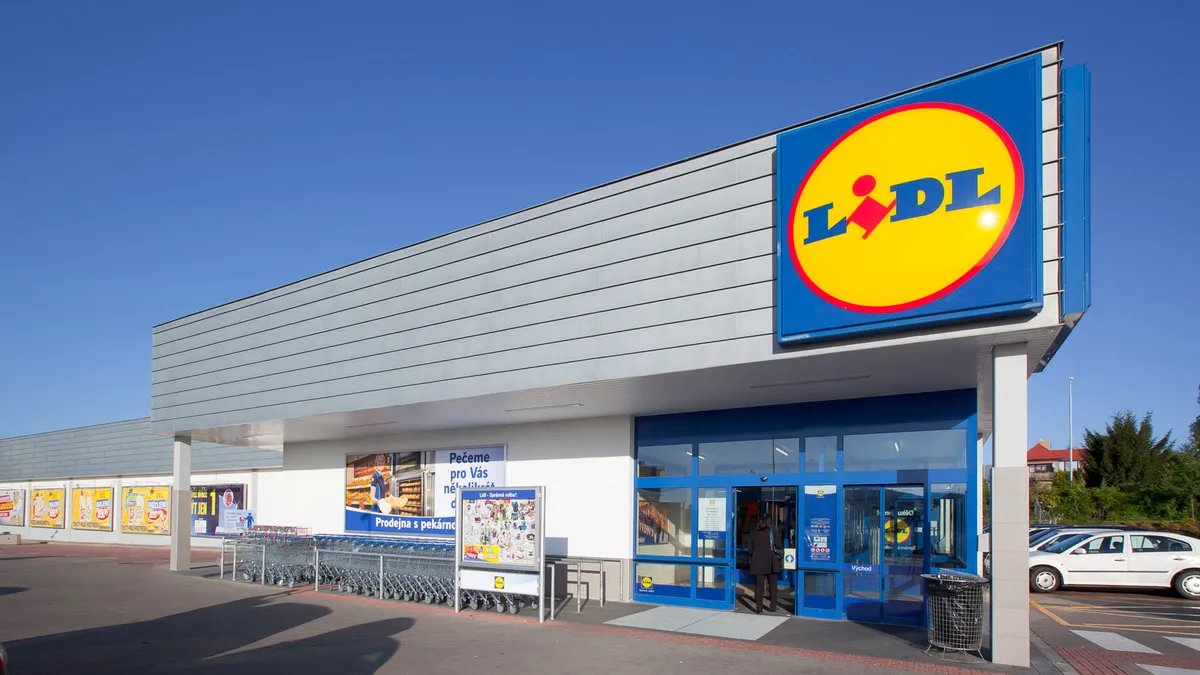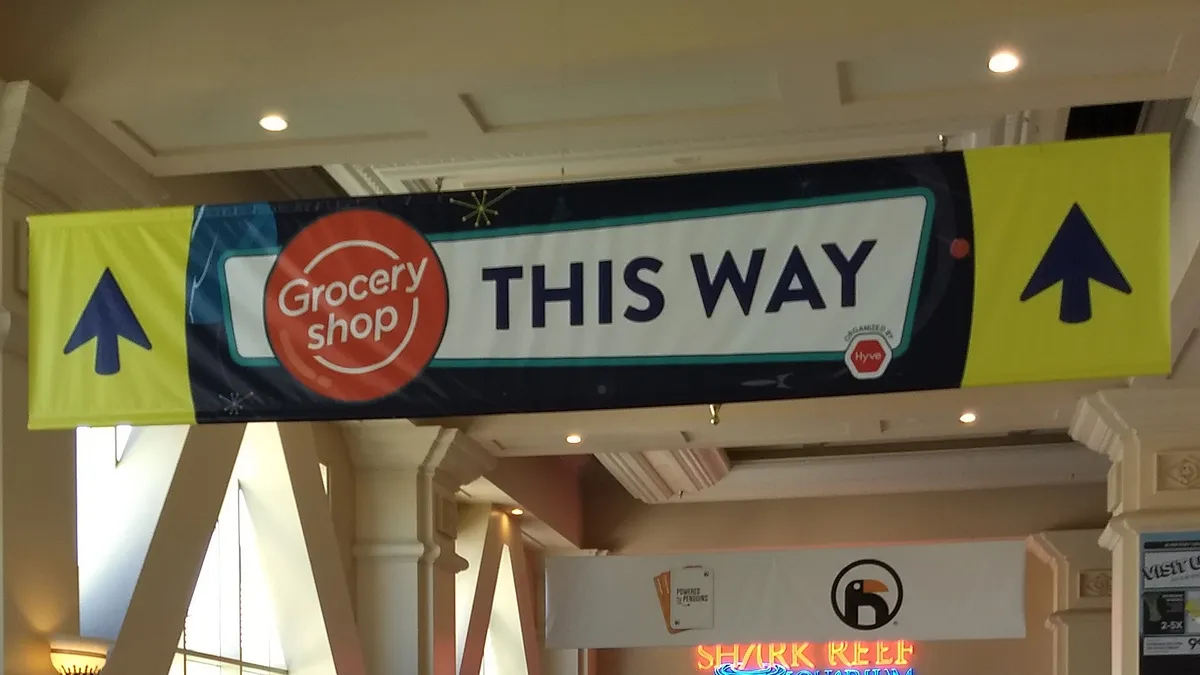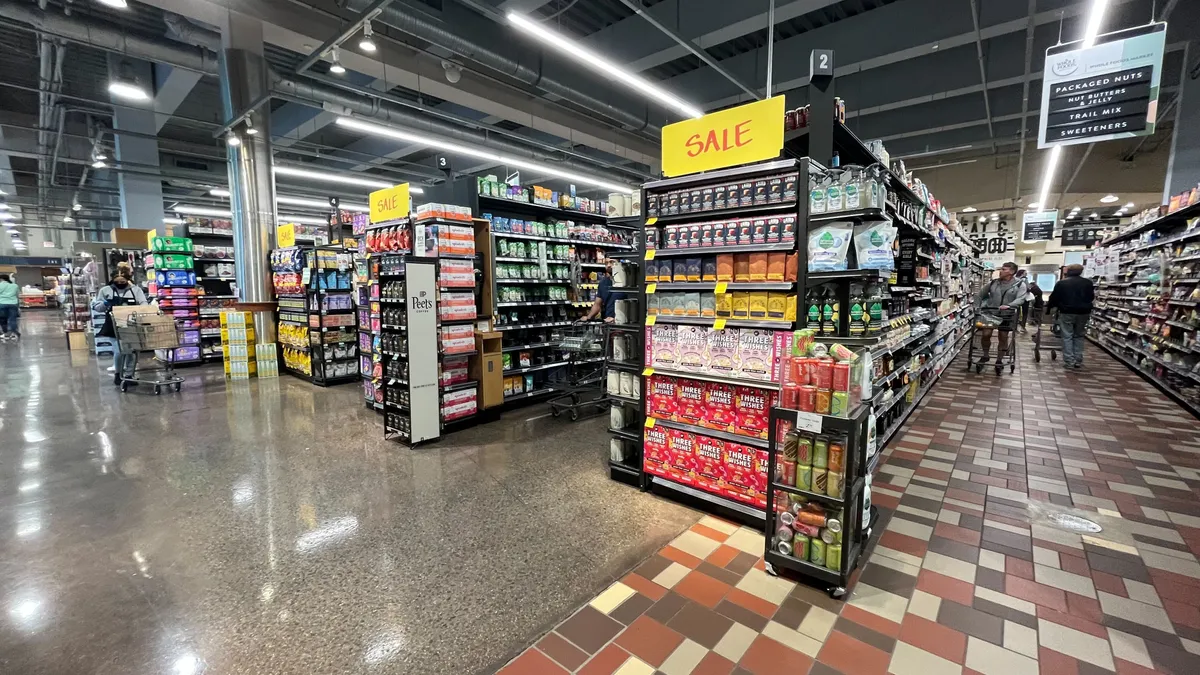Dive Brief:
- Lidl has replaced Daniel Marasch, its German head of U.S. operations with the former CEO of Lidl Spain, according to Supermarket News, citing a report from German trade publication Lebensmittel Zeitung.
- Sales at Lidl’s 37 U.S. stores have so far been “frighteningly weak,” according to the Lebensmittel Zeitung report. Michael Aranda, the former Lidl Spain CEO taking over the U.S. division, has 17 years of experience with the company and a reputation for being a disciplined leader who effectively carries out the company’s vision. Overall, according to the reports, Lidl wants to combat the issue by instituting a more disciplined approach to operations.
- U.S. and European officials confirmed to Supermarket News that that Aranda has taken over the U.S. oversight role, but disputed the idea that the company was struggling. “We feel very confident with where we are as a company and we’re proud of our launch to date,” Lidl U.S. spokesman Will Harwood told SN.
Dive Insight:
Lidl has been an overwhelming success in Europe, where it currently operates more than 10,000 stores. But it hasn’t succeeded everywhere. In 2008, Lidl pulled out of Norway after four years of operating in the country. Out of all the markets Lidl has entered, it remains the only one where the company has folded.
So what happened? According to various sources, including a rigorous master’s thesis by a former business student at the University of Agden in Norway, government import regulations stymied Lidl’s supply. But another key factor was a strong, concerted opposition comprised of the country’s four main retailers, which collectively controlled 99% of the market. Each retailer moved quickly to neutralize Lidl’s price advantage.
“Lidl was also regarded as a very strong threat for the existing four players, and their collaborating strategy to counter this threat made it even more difficult for Lidl,” wrote Haakon Winger Eide.
Is this to say the U.S. will join Norway as a failed market for Lidl in light of its alarmingly quick executive shuffle? Hardly. Companies frequently stumble out of the gate, and Lidl has only been operating in the U.S. for three months.
But it does prove that the Lidl approach many U.S. observers view as a major disruptor can itself be disrupted. Although it’s been nearly a decade since its failed attempt, and Norway and the U.S. are very different markets, there’s a common thread of intense competition pushing back against the discounter. Unlike markets like England, where Lidl and fellow discounter Aldi took retailers by surprise, American grocers prepared for Lidl’s entry this summer well ahead of time by lowering prices, honing their value messaging and through numerous other strategies.
Along with Aldi, Lidl typically has the lowest prices in the markets where it operates. And its focus on quality and fresh items, including bakery and an extensive produce section, sets it apart. But other retailers seem to be making it hard for shoppers to defect. It’s also possible that Lidl’s unique assortment, including a wide selection of nonfood items, is missing the mark with U.S. consumers.
A slow start isn’t completely unexpected, as sources have told Food Dive that Lidl’s lack of brand recognition means the slow boil of word-of-mouth recommendations will be a main route to consumer adoption. There’s also Lidl’s ability to adapt, which is widely regarded as one of its most potent capabilities. After the Norway failure, according to Simon Johnstone, a London-based analyst with Kantar Retail, Lidl learned how to better customize its assortments to individual markets. Shortly after exiting Norway, Lidl entered the very tough Italian market, and found success through a hyper-local marketing and supply strategy.
“That 'failure' has been a key reason behind delays in entering other markets such as the USA and Lithuania,” Johnstone wrote in a recent column. “Norway was a warning to Lidl about the danger of a standardised approach and the need to localise its offer as much and as early on as possible.”










